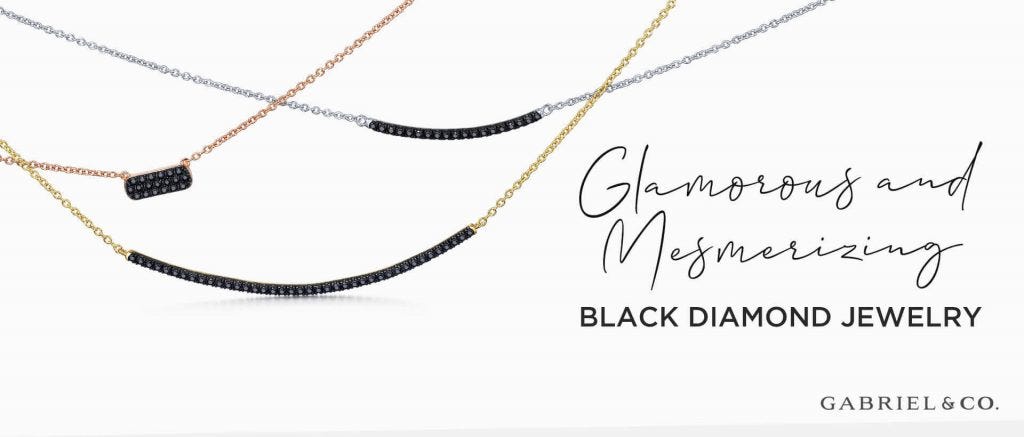What Is a Black Diamond?

In ‘Sex and The City 2’, Mr. Big finally proposes to Carrie Bradshaw with a unique ring. He uses the words, ‘because you’re not like anyone else’. We can’t help but agree! The ring in question? A gorgeous 5-carat black diamond, framed with small white diamonds in a halo, set in 18k white gold.
Over the last few years, celebrities have embraced the black diamond trend. Blake Lively was spotted wearing black diamond earrings and a neckpiece, while Selena Gomez flaunted a huge black diamond ring. Gwyneth Paltrow wore a stunning black diamond bracelet at the Emmy’s, while Taylor Swift has been sporting them in her music videos. Other singers like Katy Perry, Lady Gaga, and Rihanna have channeled a Rockstar vibe with black diamond statement pieces at events. So, what makes this attractive stone so special?
What Is a Black Diamond?
Though the term is self-explanatory, there is more to it. Let’s get into a few technical details to understand what a black diamond is. It is first important to understand the composition of diamonds. Diamonds are essentially 99.95 percent carbon and contain a few different trace elements that influence their color or crystal shape. In terms of chemical composition, white/colorless and black diamonds are exactly the same. So then, what gives black diamonds their color? The entire diamond appears black due to fractures and small mineral inclusions (mainly graphite) in concentrated or large numbers. If the inclusions were minor in number, they would just appear as dark specks or impurities in a colorless diamond. But since their presence is vast, the whole diamond is black. Other diamonds sport a clear, transparent, or translucent hue, but black diamonds are fully opaque.
Black diamonds are also known as Carbonados. In other words, black diamonds or carbonados are polycrystalline diamonds in their raw form, made up of diamond, graphite, and amorphous carbon.
Are Black Diamonds Real?
Yes! Although rare, black diamonds are very much real. Research reveals that they’ve been around for more than 3.5 billion years in two locations — South America and Central Africa. The Portuguese people of Brazil dubbed them ‘carbonados’, which means burnt or carbonized. Carbonados are said to have traces of osbornite, a mineral that is only known to be found in meteors so far. This indicates that black diamonds might have well originated in outer space and found their way here billions of years ago.
Some diamonds are manually treated to have a naturally black hue. These are typically white diamonds with large inclusions or fractures that would otherwise be deemed worthless. Instead of setting them aside, jewelers put them through heat and pressure to create an all-over black hue.
How Can I Tell If My Black Diamond Is Real?
It is relatively easy to identify at home whether your black diamond is real or not. Observe the edges of the black diamond carefully. If they are a shade of brown rather than stark black, then your black diamond is not natural. A popular way to test the authenticity of a black diamond is the white light test. Keep your diamond under a flashlight or any other source of white light. If the white light bounces off across the spectrum, producing a riot of colors, then the diamond is real. If the stone absorbs the light or does not reflect it multi-directionally, it proves that your black diamond is fake. Also, black diamonds always have a rough surface as opposed to smooth. Just glide your fingers over the diamond. If it feels uneven and rugged, then the diamond is real. Lack stones with a perfectly smooth surface and a polished finish are not natural black diamonds.
No doubt you are in love with the mystical and unusual composition of these shining black gemstones, just the way we are! They are undoubtedly out-of-this-world, in the truest sense of the term! To choose from a range of black diamond rings, necklaces, bracelets, bangles, earrings, and more, visit Gabriel & Co.


Comments
Post a Comment